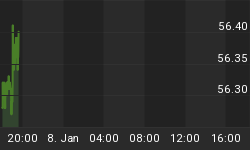We noted that London palladium lease rates started to surge in late 2016 giving early visibility of a physical palladium supply shortage in the London precious metals market.
The Achille's Heel of the world's predominant price setting center for precious metals (gold, silver, platinum, and palladium) in London is the London Bullion Market Association's (LBMA) design by the Bank of England to substitute trading and holding metal itself - the historically reliable price discovery method - with unallocated (unbacked) precious metals spot contracts. Unallocated spot contracts (for immediate ownership of metal) are effective in suppressing metal prices if investment funds and banks can be convinced that the contract claims, that can be created without limit, are a substitute for metal itself. The LBMA currently trades ownership of more than 200M oz of gold each day (more than 2x global annual mine production) in the form of unallocated spot metal contracts with an estimated 400M to 600M oz of unallocated claims for gold standing in the London market.
This unbalanced market of paper claims vs the reality of actual available metal can continue while investors are happy to hold certificates of metal ownership. The problem arises when certificates of metal are not adequate substitutes for metal.
This situation appears to have arisen in the 8.5 million oz per annum global palladium market, the smallest market of the four precious metals. Palladium plays an essential role in the automotive industry providing the key metal in gasoline engine catalytic converters used for exhaust emissions reduction. Unallocated palladium spot contracts cannot be used in these converters as a metal substitute.
The reduction in South African mine output due to global palladium and platinum prices in London being set below mining costs as well as a reduction in Russian exports of palladium in 2015 (reducing its annual mine export supply to 1.0 million oz from 2.5 million oz) has resulted in visible draw-down in global stockpiles to 1.5 million oz from ~ 3.5 million oz in 2014. The counter-intuitive reduction in palladium investment stockpiles in a rising price environment since 2015 imply that these investment stockpiles may have been utilized to meet physical supply while global mine output languished.

Palladium Lease Rate Spikes - A Metal Shortage Alert:
During this past week of June 5 to June 9, 2017, we've seen a notable palladium lease rate shock in London. The lease rate is the per annum cost to borrow metal for various maturity periods (1-month, 3-month, etc.) and it increased last week from 3.5% to approximately 16% in London. Also of interest is that the normally reliable Commerzbank stopped publishing its London precious metals lease data on June 5, 2017. While additional palladium may temporarily be borrowed to reduce the London lease rate, market shortage for this metal is clearly now at play.
Palladium Lease Rates from 2006 to 2017:

Source: TDBank
Russia saved the London market in the late 1990s with its stockpiles that were at that time vast during a similar London palladium shortage. Those stockpiles have now been consumed in the past 20 years and the long term price chart of palladium appears to indicate that we are heading into a new price regime for this metal. The visibility that palladium gives to the suppression of global precious metals prices in the London market from its issuing and trading unallocated paper contracts may well result in a cascade of higher precious metals prices with platinum, silver, and then gold breaking to higher prices as well as investors and industrial users alike come to realize that London unallocated paper contracts are not metal. Of concern to all should be the impact on interest rates identified by future Treasury Secretary Larry Summers in his 1985 paper with Barsky. At that time, Summers and Barsky identified a rising price of gold as a dominant barrier to low interest rates. Two years later in 1987, the Bank of England formed the LBMA and the global debt bubble was launched in earnest. http://www.safehaven.com/article/42600/transition-of-price-discovery-in-the-global-gold-and-silver-market

















